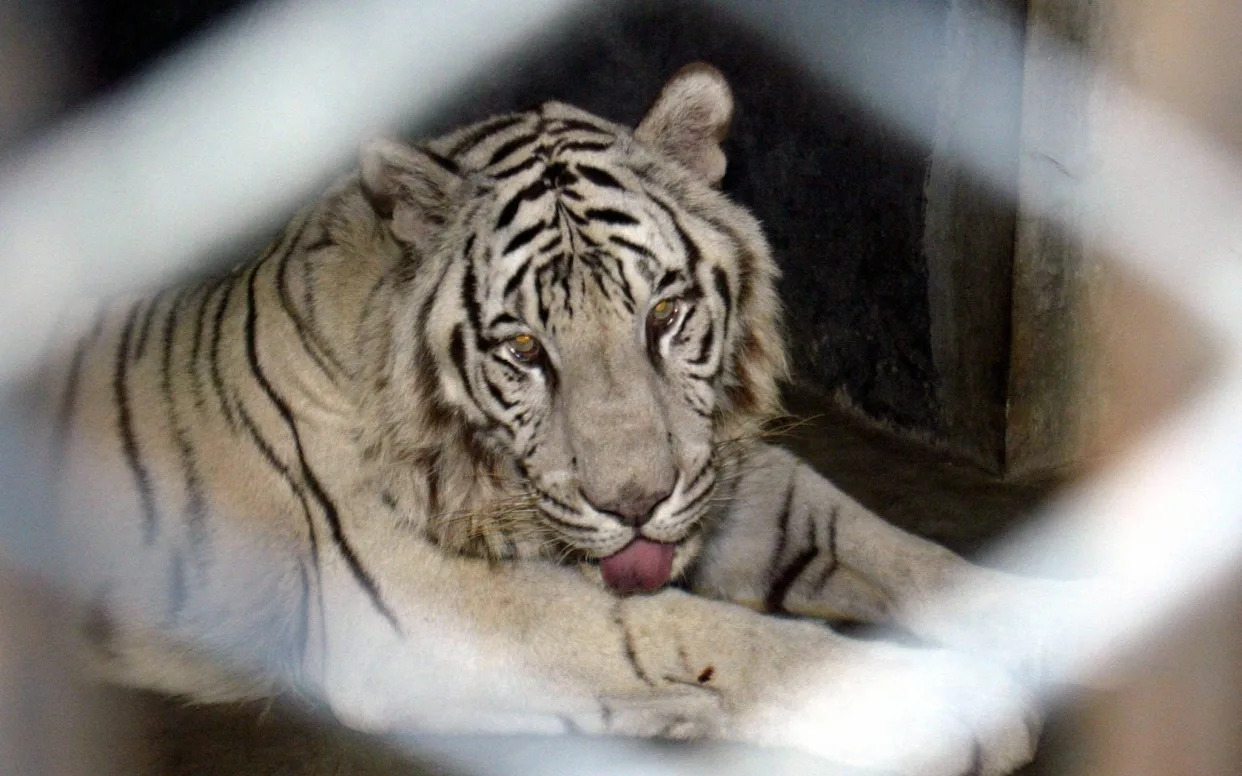Sarah Newey
Thu 3 October 2024

Test results confirmed that the big cats died ‘because of H5N1 type A virus’ - SAEED KHAN/AFP/Getty Images
A panther, three lions and 47 tigers have died from bird flu in zoos in southern Vietnam, further raising concerns about the potential for the virus to evolve to better infect humans.
The fatalities took place in two zoos in August and September near Ho Chi Minh City, state media has reported, and test results from the National Centre for Animal Health Diagnosis later confirmed that the big cats died “because of H5N1 type A virus”. No staff members displayed symptoms.
Experts said the animals likely caught the virus after eating meat from infected poultry.
“Immediate suspicion would be that the zoo animals were infected through whatever they have been given to eat, for example fed chickens that had H5N1,” said Prof Ben Cowling, an epidemiologist at the University of Hong Kong.
He added that this is not common, but that big cats have caught avian influenza before. As the pathogen spread across southeast Asia in 2003 and 2004 – fatally infecting 24 people – two tigers and two leopards also contracted H5N1 at a zoo in Thailand.
But the latest cases come amid mounting uneasiness as bird flu jumps into more and more mammals – including seals, red red foxes and bears – providing space for it to potentially evolve to better infect humans.
“Although avian influenza primarily affects poultry and wild birds, infections in mammals raise concerns about the virus’ potential to adapt and spread across species,” said Dr Bolortuya Purevsuren, a project officer at World Organisation for Animal Health’s southeast Asia office, adding that the Vietnam cross-species infections will be closely monitored.
On a global scale, experts are especially concerned about the seemingly unstoppable outbreak of bird flu in cattle in the United States, where 244 herds in 14 states have been infected – plus at least 14 people. Though these cases have so far been mild, scientists are racing to determine whether there has been human-to-human transmission.
In that outbreak, too, felines have been badly hit – the US Department of Agriculture has detected 43 cases in domestic cats so far this year, with many of them infected after drinking H5 contaminated cows milk.
“So definitely felines seem to be more susceptible to H5N1 than some other mammals,” said Prof Ian Barr, deputy director of the WHO Collaborating Centre for Reference and Research on Influenza in Melbourne.
Dr Charin Modchang, an specialist in disease modelling and epidemiology at Mahidol University in Bangkok, added that he was surprised to see tigers, leopards and panthers infected given the reports of H5 in domestic cats.
“But, from the evolutionary perspective, if the virus can infect and adapt to new mammalian hosts, this should be a concern, as infections in mammals can lead to adaptations that make the virus better suited for mammalian hosts, which are closer to humans than birds,” he said.
“As far as I know, most mammalian H5N1 cases are usually ‘dead-end’ infections with little onward transmission. So the important question is, is this also the case for these tiger infections? How did the tigers get infected, and were there any tiger-to-tiger transmission of the virus? I think we need to find out.”
No comments:
Post a Comment